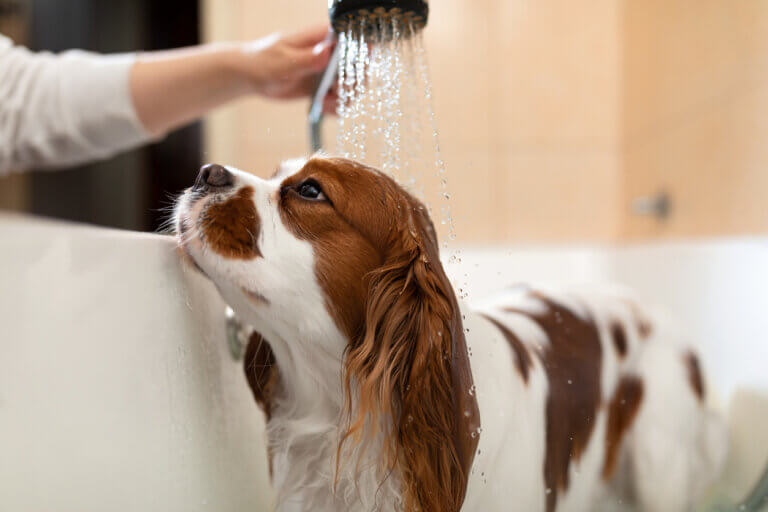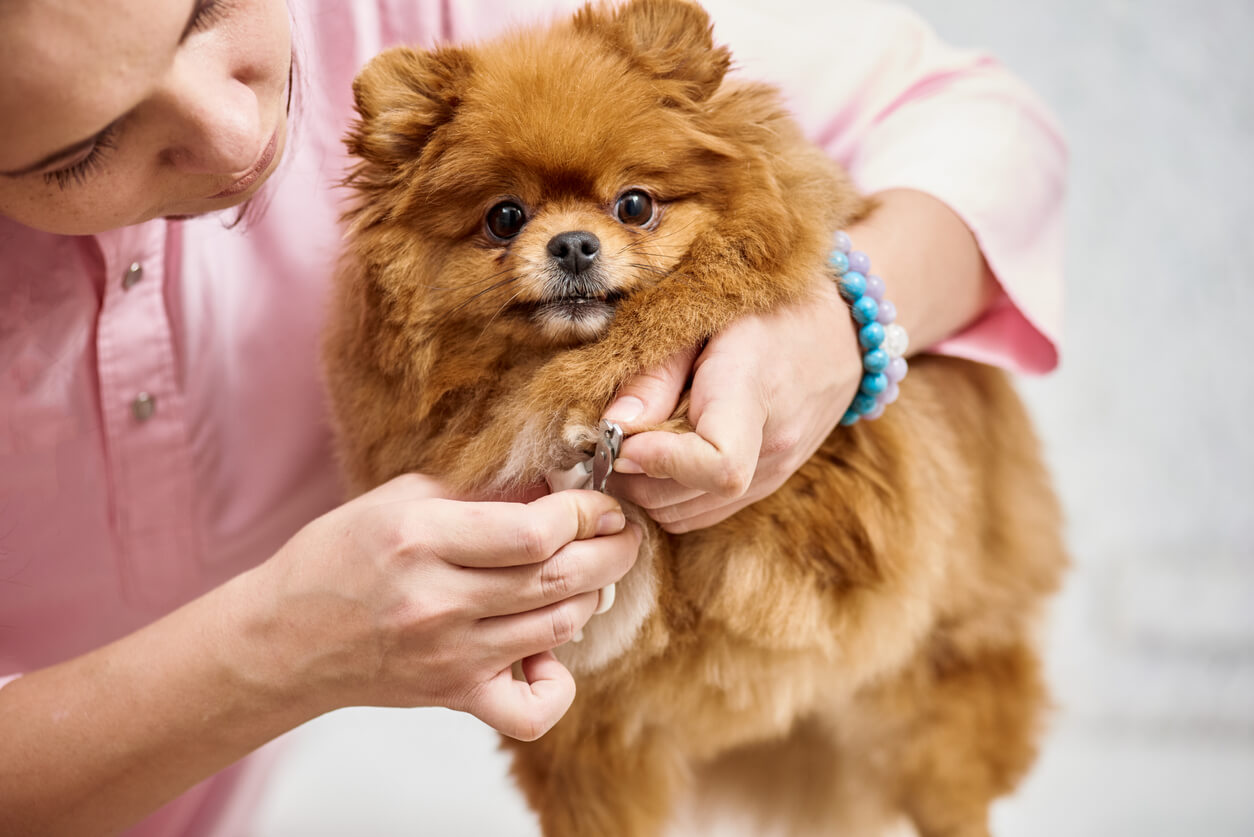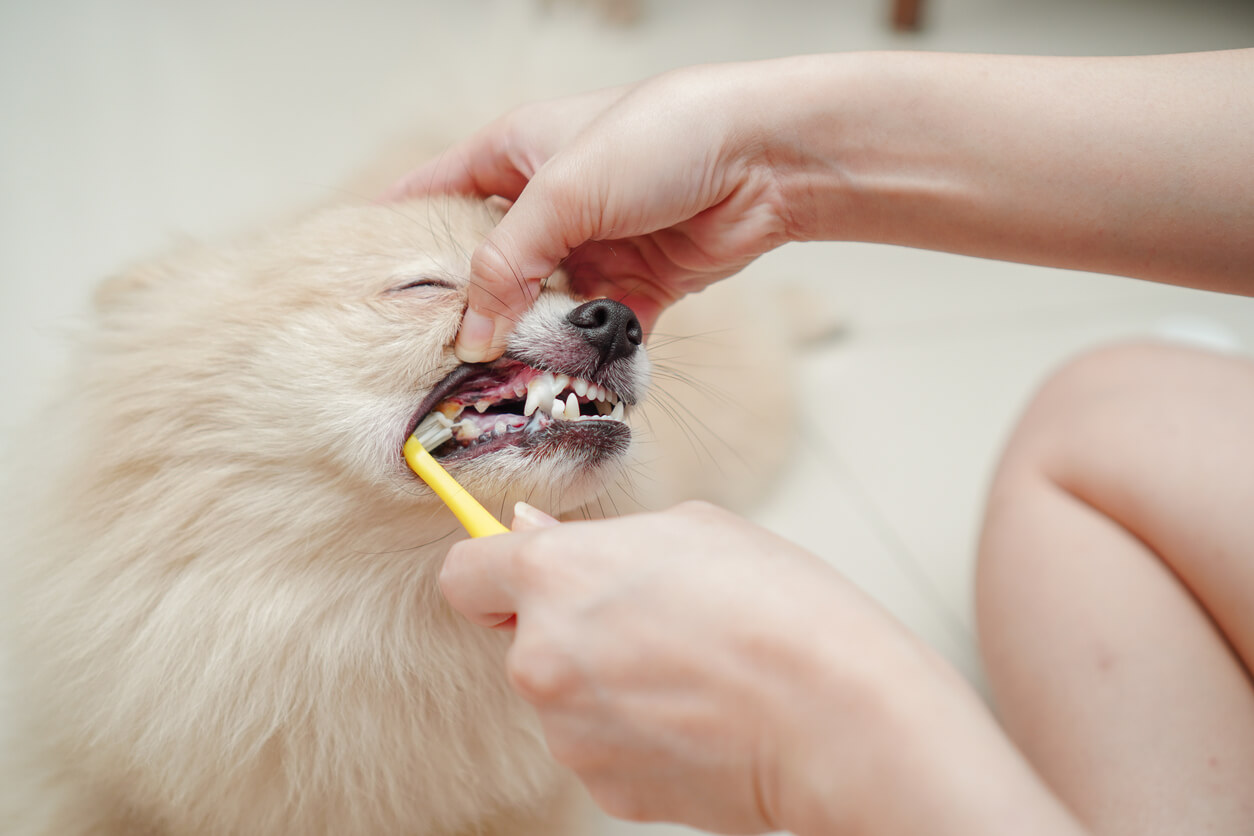Canine Hygiene: Regular Grooming and Your Dog's Health

Did you know that good canine hygiene can be the key to a happy and healthy life for your puppy? The arrival of a dog in the family is a magical moment, but it also brings with it several responsibilities. And besides being an aesthetic issue, a proper grooming routine can have a significant impact on your furry one’s overall health.
Making the decision to adopt a puppy is an exciting and joy-filled experience. These adorable companions fill us with love and bring us unparalleled moments of happiness. Keep reading and discover some of the benefits of keeping your faithful friend clean and being a responsible owner.
You may be interested in: Your Dog’s Oral Hygiene: Don’t Ignore It!
Taking care of your puppy’s hygiene can improve its health
Keeping our pets healthy and clean is an act of love for their well-being. So, if it’s your puppy’s first time grooming or time for its monthly bath, keep in mind that simple regular maintenance can make all the difference in your loyal companion’s life by improving its coat, teeth, paws, and sensory organs.
Here are some of the advantages of promoting good canine hygiene in your dogs.
1. Helps keep their coat healthy
Your pup’s coat isn’t only the layer of softness that makes it adorable but also an indicator of its overall health. Maintaining a beautiful, clean coat is essential to ensuring that your furry one feels comfortable and radiant. Here are some keys to achieving this
- Regular baths: Depending on your puppy’s breed and lifestyle, establish a proper bathing frequency. Use a mild, dog-specific shampoo to avoid skin irritation, and be sure to rinse thoroughly to remove any residue.
- Constant brushing: Regular brushing not only removes surface dirt but also distributes the coat’s natural oils, keeping it soft and shiny. Of course, use a brush suitable for the length and texture of your puppy’s coat.
- Parasite control: If necessary, consult your veterinarian for a parasite prevention program suitable for your puppy. Fleas and ticks can cause discomfort and health problems, so it’s essential to keep them at bay.
2. Avoid claw and paw injuries

Your puppy’s hygiene routine should include caring for its claws and paws. This not only prevents injuries but also ensures that your puppy can move freely and comfortably. Because of this, try to trim your dog’s claws once or twice a month.
Use scissors or nail clippers designed for puppies and cut carefully, making sure not to reach the sensitive part known as the “pulp”. After trimming, you can file the claws to soften the sharp edges and prevent them from snagging on surfaces.
Finally, don’t forget to examine your puppy’s paw pads for cuts, scrapes, burns, or signs of irritation. If you find anything unusual, consult your veterinarian. Also, apply a specific moisturizer for dog paws if you live in areas with extreme weather or in winter.
3. Take care of your dog’s eyes and ears
If you want to avoid infections in your puppy’s eyes and ears, it’s best to clean these delicate areas regularly to maintain their health and well-being. Even more so if your dog’s breed is known to secrete tears frequently.
You can use a sterile gauze or a clean, soft cloth dampened with warm water to gently wipe away debris that accumulates around your puppy’s eyes. Try to do it very carefully to avoid irritation and discomfort.
On the other hand, if your veterinarian recommends it or if your puppy has ears prone to accumulate dirt, learn to clean its ears with a specific cleaner for dogs. Also, keep its ears dry after bathing or if it’s been in the water. Moisture in this area can promote the growth of bacteria and fungi.
4. Promote your dog’s oral hygiene

Brushing your dog’s teeth is one of the pillars of canine hygiene to prevent plaque and tartar buildup. At least three times a week, use a toothbrush and toothpaste designed for dogs. It’s best to start when they are puppies to get them used to this routine.
You can also provide chew toys designed to help clean your puppy’s teeth. Maintaining good oral hygiene is essential to your puppy’s overall health and can prevent tooth loss and painful problems in the future.
Continue reading: Brushing a Dog’s Teeth: Six Common Mistakes
5. Encourages early detection of health problems
During your puppy’s regular grooming process, pay attention to its skin and coat. Look for signs of redness, irritation, or warm areas on the skin. The eyes are also important indicators; make sure they’re clear and free of unusual discharge.
If you notice any abnormalities in your dog’s body, don’t hesitate to seek veterinary care immediately for prompt diagnosis and treatment. Detecting lumps, rashes, or strange behaviors in time can save your dog’s life.
Good canine hygiene is necessary to ensure your dog’s well-being
By following the above care practices, you won’t only improve your puppy’s physical health but also strengthen the bond between the two of you. Remember that every puppy is unique, and it’s important to tailor your grooming routine to your pet’s specific needs. So be sure to seek professional help for additional guidance on caring for your pet.
This text is provided for informational purposes only and does not replace consultation with a professional. If in doubt, consult your specialist.